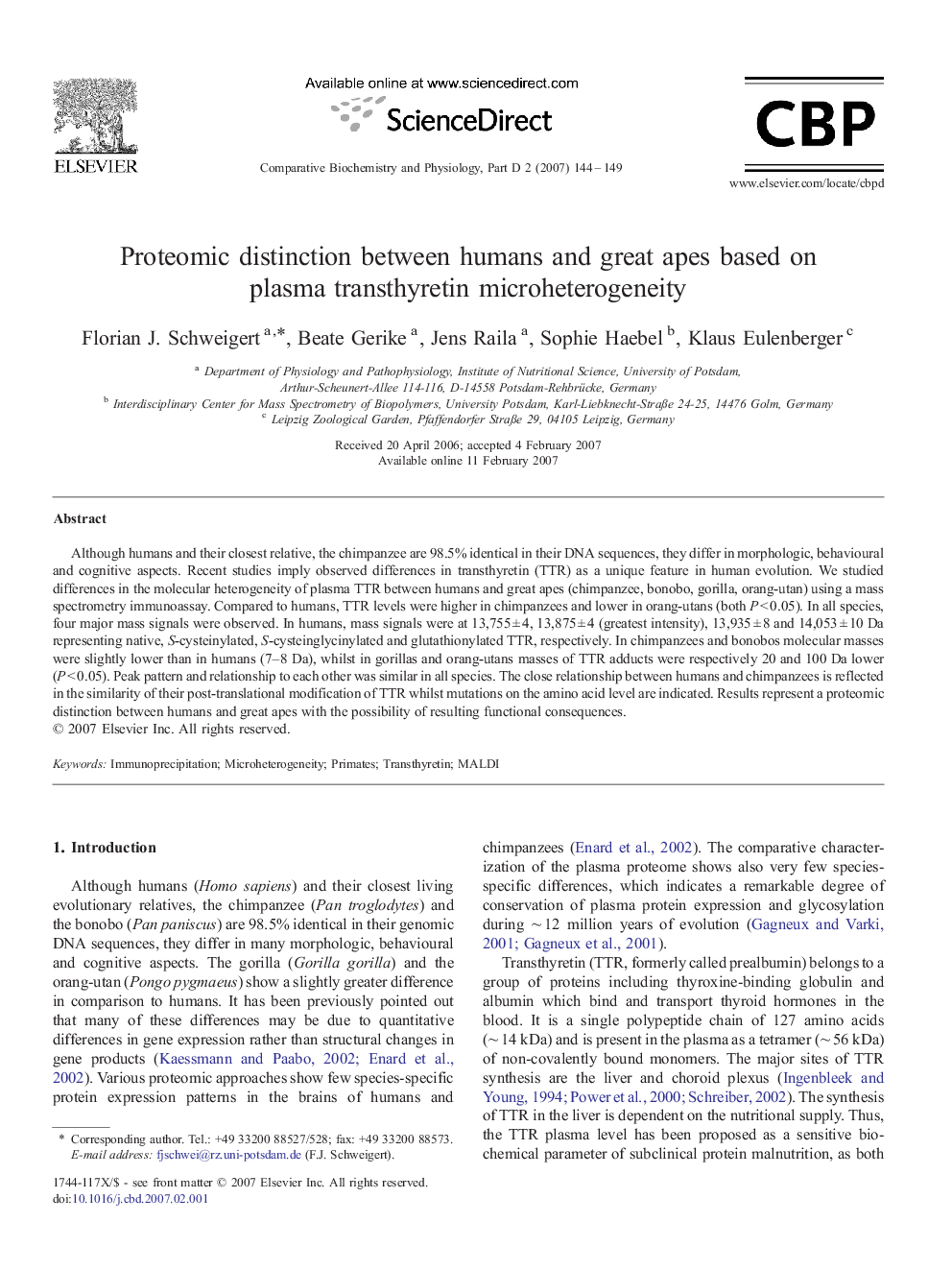| Article ID | Journal | Published Year | Pages | File Type |
|---|---|---|---|---|
| 1978897 | Comparative Biochemistry and Physiology Part D: Genomics and Proteomics | 2007 | 6 Pages |
Although humans and their closest relative, the chimpanzee are 98.5% identical in their DNA sequences, they differ in morphologic, behavioural and cognitive aspects. Recent studies imply observed differences in transthyretin (TTR) as a unique feature in human evolution. We studied differences in the molecular heterogeneity of plasma TTR between humans and great apes (chimpanzee, bonobo, gorilla, orang-utan) using a mass spectrometry immunoassay. Compared to humans, TTR levels were higher in chimpanzees and lower in orang-utans (both P < 0.05). In all species, four major mass signals were observed. In humans, mass signals were at 13,755 ± 4, 13,875 ± 4 (greatest intensity), 13,935 ± 8 and 14,053 ± 10 Da representing native, S-cysteinylated, S-cysteinglycinylated and glutathionylated TTR, respectively. In chimpanzees and bonobos molecular masses were slightly lower than in humans (7–8 Da), whilst in gorillas and orang-utans masses of TTR adducts were respectively 20 and 100 Da lower (P < 0.05). Peak pattern and relationship to each other was similar in all species. The close relationship between humans and chimpanzees is reflected in the similarity of their post-translational modification of TTR whilst mutations on the amino acid level are indicated. Results represent a proteomic distinction between humans and great apes with the possibility of resulting functional consequences.
